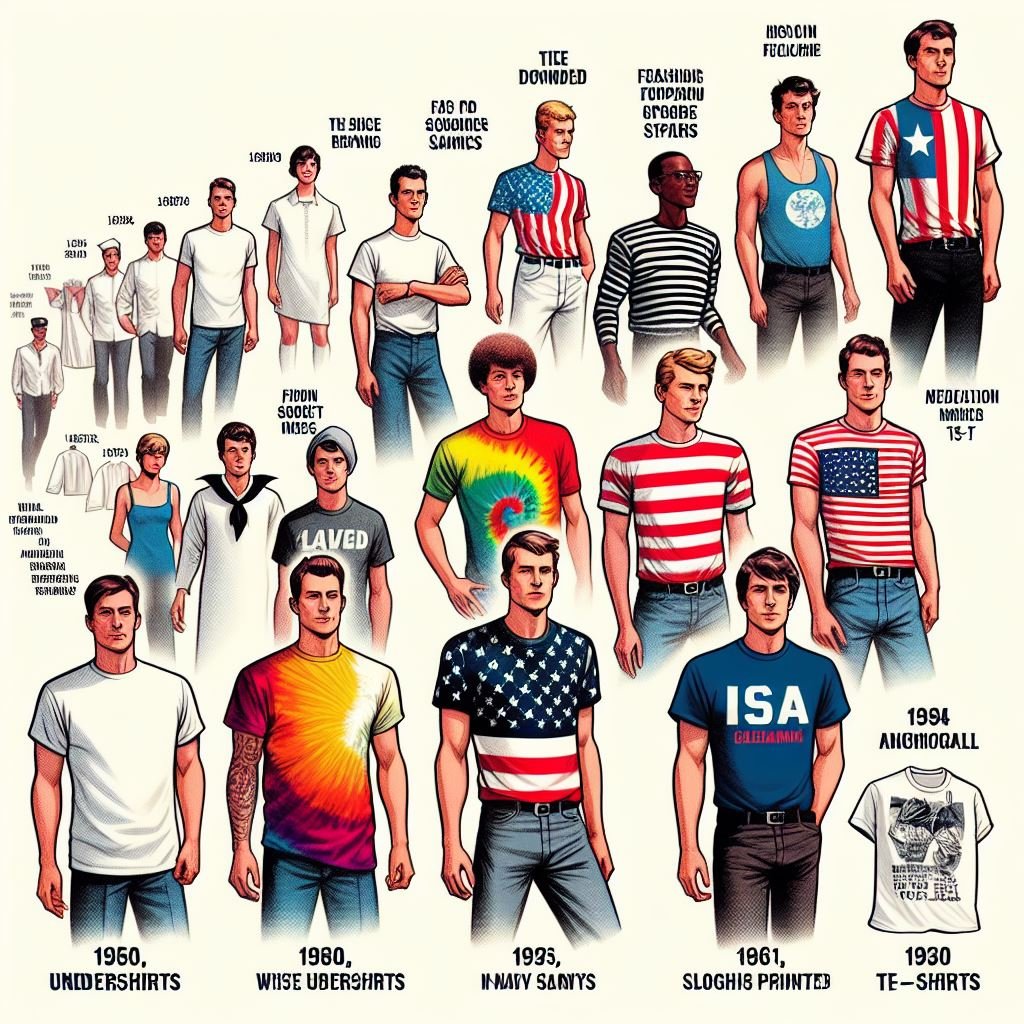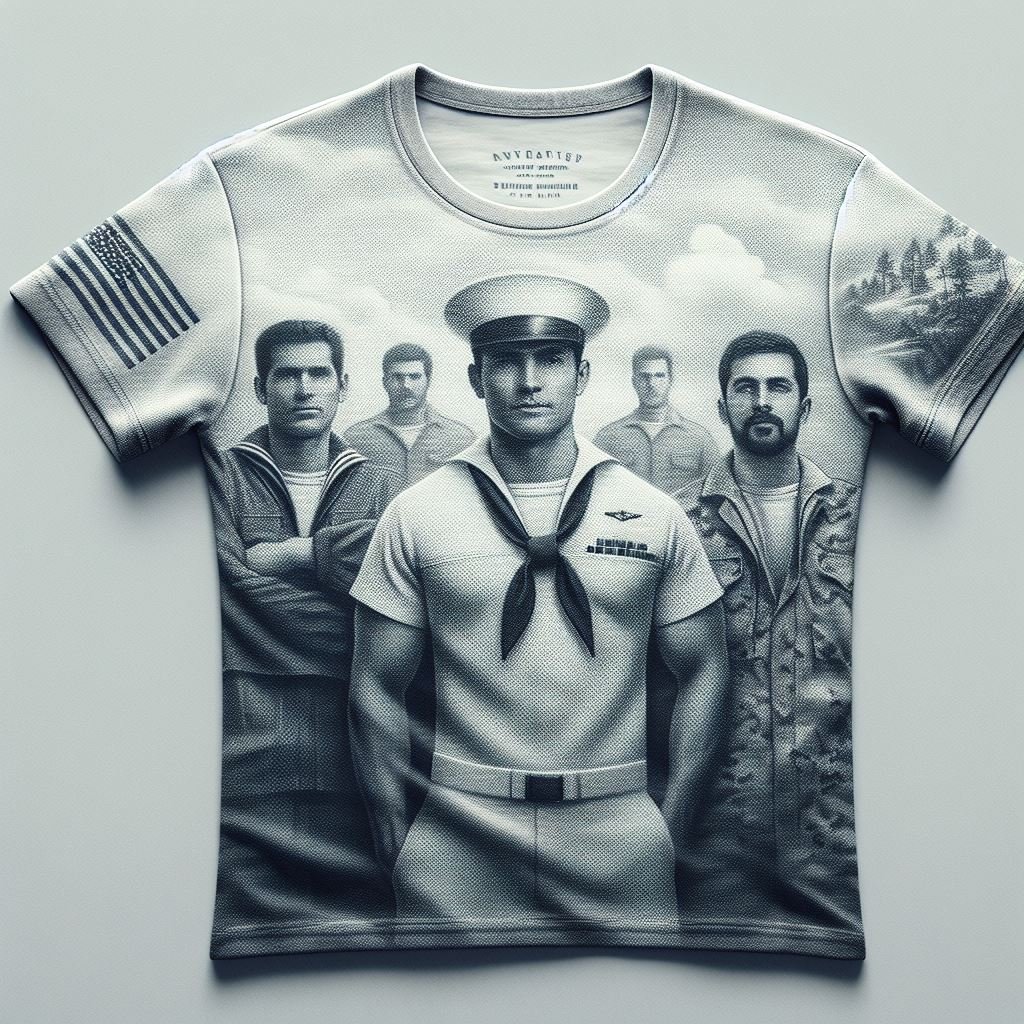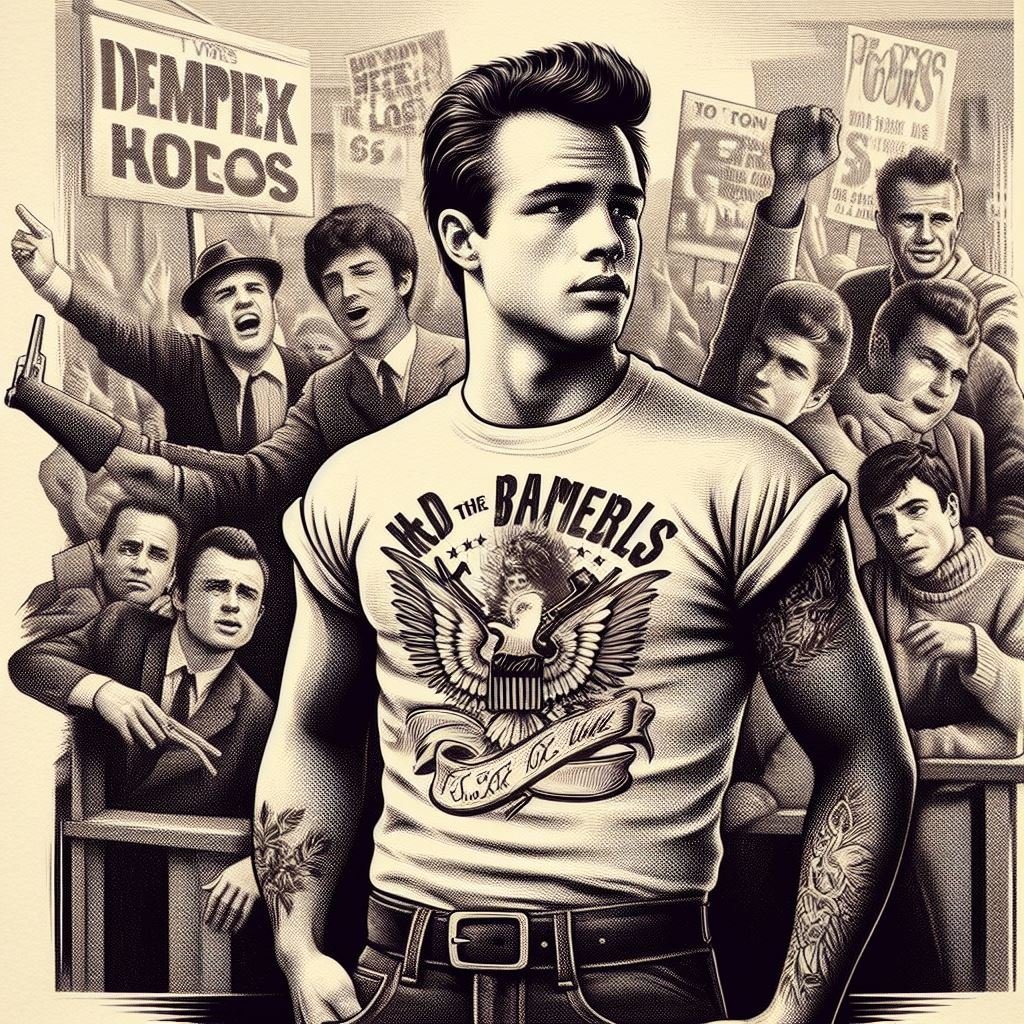
Introduction:
T-shirts: they’re ubiquitous in our wardrobes, but how much do we really know about their origins and evolution? Join us on a journey through time as we delve into the fascinating history of this humble yet iconic garment. From its humble beginnings as an undergarment to its status as a fashion staple and cultural phenomenon, the T-shirt has woven itself into the fabric of our lives in ways we may not even realise.
World War I and Beyond:

The T-shirt originated from undergarments worn by workers in various industries, particularly the United States Navy. These undershirts were typically made of lightweight cotton and had short sleeves, making them comfortable to wear underneath uniforms.
It wasn’t until World War I that the T-shirt gained broader recognition, thanks to American soldiers stationed in Europe who were issued cotton undershirts as part of their uniforms. These undershirts, affectionately dubbed “T-shirts” for their shape, became popular among soldiers who often wore them without their uniform jackets in the sweltering heat of battle. After the war, returning soldiers brought the T-shirt back home, where it quickly caught on as a casual garment worn for leisure and recreation.
By the 1920s and 1930s, the T-shirt had transitioned from being an undergarment to a standalone piece of clothing worn for comfort and leisure. It became increasingly popular among labourers, farmers, and athletes due to its practicality and affordability.
The T-shirt gained further mainstream acceptance during the 1940s and 1950s, thanks in part to Hollywood films depicting actors such as Marlon Brando and James Dean wearing them in iconic roles. This period marked the beginning of the T-shirt’s association with rebelliousness and youth culture.
The Rise of Pop Culture:

In the 1950s and 1960s, the T-shirt underwent a transformation, evolving from a utilitarian undergarment to a symbol of rebellion and self-expression. Hollywood icons like Marlon Brando and James Dean famously wore T-shirts in films, helping to popularise the garment as a symbol of youthful defiance and anti-establishment sentiment. The T-shirt became a canvas for political slogans, band logos, and counter cultural messages, reflecting the social upheaval and cultural revolution of the era.
The T-shirt continued to evolve in the 1980s and 1990s with the rise of streetwear culture and designer labels. Brands like Calvin Klein, Ralph Lauren, and Guess popularised logo T-shirts, while skateboarding and hip-hop communities embraced oversized T-shirts and graphic prints.
The Modern Era:
Today, the T-shirt remains as relevant as ever, transcending age, gender, and cultural boundaries to become a wardrobe staple for people around the world. From high-fashion runways to streetwear brands and everything in between, the T-shirt continues to evolve, reflecting the ever-changing landscape of fashion and society. With its versatility, comfort, and endless potential for customisation, the T-shirt is more than just a piece of clothing – it’s a blank canvas for self-expression, creativity, and cultural commentary.
Tracing the History of T-shirts in India
India, with its rich textile heritage and vibrant culture, has a fascinating history when it comes to T-shirts. The introduction of T-shirts to India can be traced back to the colonial era, when British soldiers and traders brought Western clothing styles to the subcontinent. Initially regarded as undergarments, T-shirts were worn primarily by Europeans and the elite class, with Indian traditional attire dominating the fashion landscape.

In the post-independence era, as India underwent significant socio-economic changes, Western fashion began to influence the urban youth culture. The adoption of Western styles, including T-shirts, became a symbol of modernity and youth rebellion against conservative norms. However, it wasn’t until the late 20th century that T-shirts gained widespread popularity among Indians, thanks to globalisation, urbanisation, and the influence of Western media and pop culture.
Conclusion:
As we’ve seen, the history of the T-shirt is a rich tapestry woven with threads of innovation, rebellion, and cultural significance. From its humble origins as an undergarment to its status as a global fashion icon, the T-shirt has endured the test of time, leaving an indelible mark on the world of fashion and popular culture. So the next time you slip on your favourite T-shirt, take a moment to appreciate the centuries of history and heritage that are woven into its fabric.



